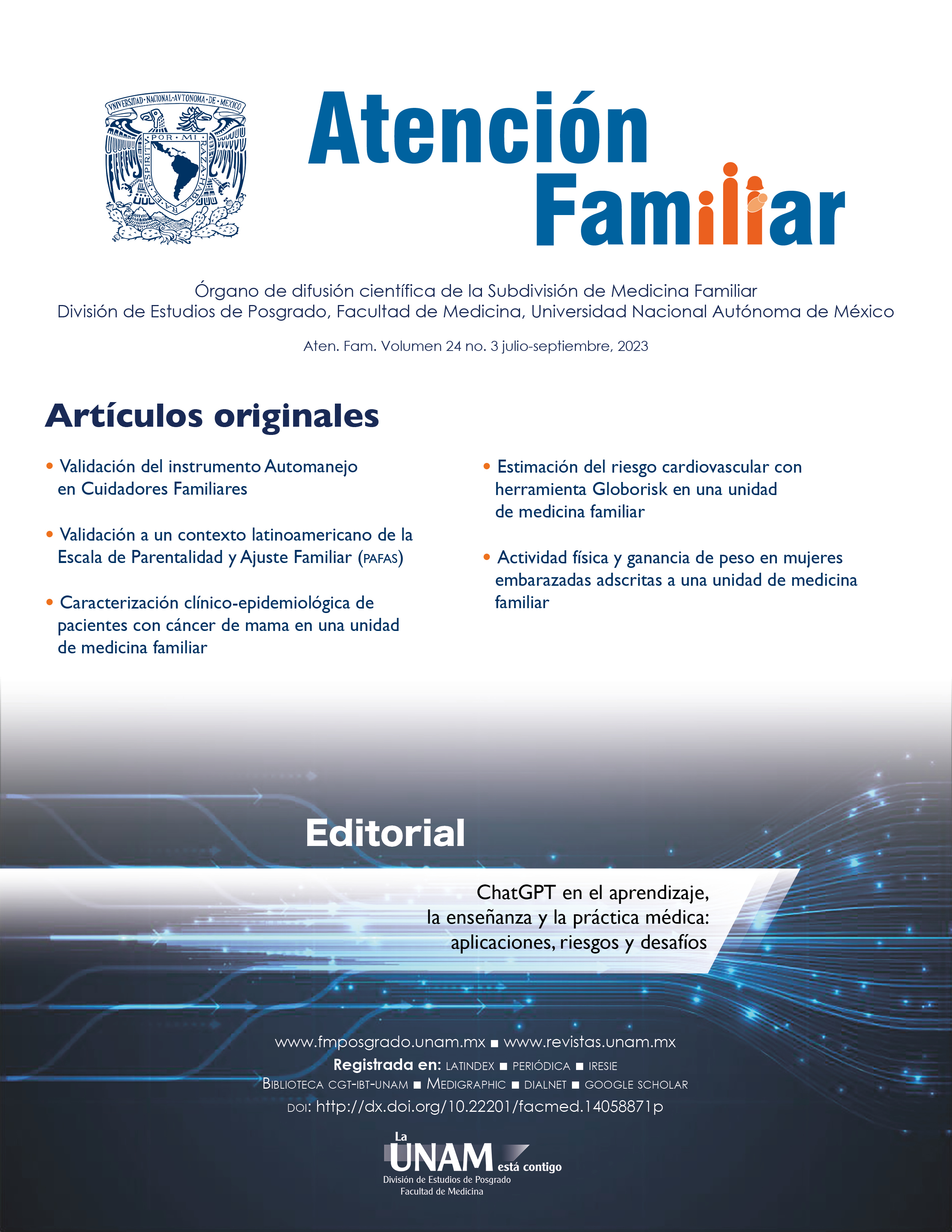Cardiovascular Risk Estimation with Globorisk in a Family Medicine Unit
Main Article Content
Abstract
Objective: To estimate cardiovascular risk using Globorisk in patients of a family medicine unit. Methods: crosssectional analytical study carried out from August to December 2021, using a non-probabilistic sampling. This simple consisted of 750 people aged 40 to 60 years. Globorisk was used to estimate cardiovascular risk. The International Physical Activity Questionnaire (IPAQ) was also used; blood pressure, weight, height, and body mass index were measured. Triglyceride, cholesterol, and glucose levels were collected. The magnitude of the association effect was estimated with Odds Ratio and statistical significance by Mantel-Haenszel χ2, with a confidence interval of 95%.
Results: The high to very high cardiovascular risk was 27.8% (209/750). 76.3% of participants were overweightobese (572/750). The factors associated with high to very high cardiovascular risk were: male gender (or 15.8; 95% ci 7.8-32.1), low schooling level (or 2.9; 95% ci 1.6-5.3), an unpaid occupation (or 3.2; 95% ci 2.0-5.3), living at home without a partner (or 2.6; 95% ci 1.6-4.3), diabetes (or 10.8; 95% ci 5.2-22.4), cholesterol level higher tan 200 mg/dL (or 2.7; 95% ci 1.7-4.5), and do light physical activity (or 2.3; 95% ci 1.4-3.9).
Conclusion: three out of ten analyzed persons presented high to very high cardiovascular risk; the associated factors were related to gender, education, occupation, and other metabolic variables.
Downloads
Article Details
Citas en Dimensions Service

This work is licensed under a Creative Commons Attribution-NonCommercial-NoDerivatives 4.0 International License.
